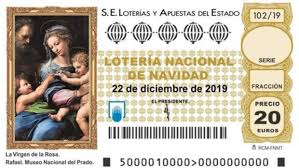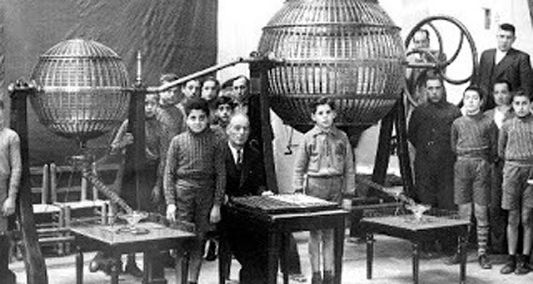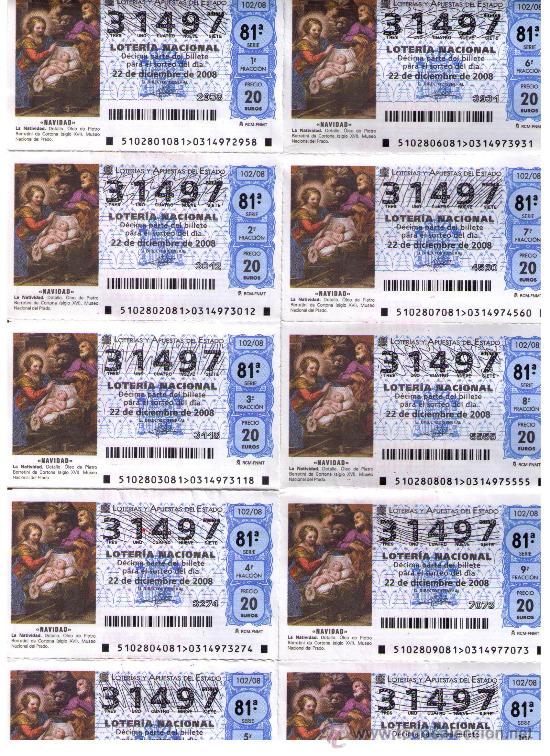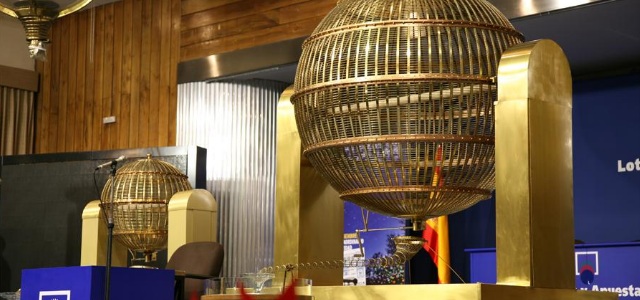
Spain's Christmas lottery has been running for over 200 years. I have no idea how long other lotteries have been working but in Spain the Christmas lottery is a tradition, an institution, and plays a major role in boosting the Christmas Spirit.
I must admit when I first came to Spain I found it quite confusing; “series”, “billetes”, “decimos”, “participaciones” etc. and then the prizes which seem endless, when the results are published the following day in the paper it takes up pages and pages. To give you an idea of how important this is for the Spanish and their festive spirit, this year there is an expected average spend per inhabitant of in the Valencian community of €75, slightly more than last year. This year there is an expected turnover of more than 3,6 Billion Euros of which 70% will go to back out in prize money. Not quite sure what happens to the other 30%, which is a fair whack!
Originally in 1812, it was an idea created by a Minister called Diriaco Gonzalez to increase the government income without penalising the people via additional tax. As it goes there are over 15,000 prizes given out. .

 In total 180 million “decimos” (tenths) are put on sale in the month of July at €20 a ticket. A decimo is a tenth of a “billete”- Note. So obviously if you want all of the decimos of a particular number you need to buy the entire “Billete” at €200.
In total 180 million “decimos” (tenths) are put on sale in the month of July at €20 a ticket. A decimo is a tenth of a “billete”- Note. So obviously if you want all of the decimos of a particular number you need to buy the entire “Billete” at €200.
Each number assigned to a “Billete” is printed up 180 times into what they call “Series” – serial numbers, basically, so each run of decimos has a different serial number. So if you chose for example 12,345 as your preferred number (always five digits) to buy all of the tickets that carry this number in the country you would have to buy 180 “Billetes” (all the serial numbers) meaning you would have to cash out €36,000.
Finally you have "participaciones" which are shares of "decimos" normally divided in to 10 parts aswell, so 1/10th of a "decimo"- 2 euros. This is normally done by groups of people who can't afford to buy so many tickets at €20 and prefer to buy more "shares" in other numbers and hedge their bets for a budget. This is very common in bars and schools, small companies and groups of friends etc. It is also very common for companies to give lottery to their employees as a Christmas gift.
As far as the prize money goes, the main prize is the 1st Prize which they call “El Gordo de Navidad” and pays out €4,000,000 per Serial number, which is €400,000 per Decimo. The 2nd prize pays out €1,250,000 per serial number, the third prize €500,000 per serial number and then there are other prizes of €200,000 - €60,000 - €20,000 euros and so on.
This lottery, as opposed to other lotteries, does not make any one person stinking rich, mainly because of the price of the tickets. It is designed to share the wealth amongst the people. As the Serial numbers and the Billetes tend to be bought up together without being divided, it is very common for entire villages or neighbourhoods to end up having bought the same number or very similar numbers that also gain prize money, meaning when it hits in a small village the chances are most of the village wins.
On occasions, several “serial numbers” can hit in the same place. When you think that there is a prize of €4,000,000 for each of the 180 “Series” it’s quite a substantial sum that is being distributed just with the 1st prize - €720m. This is why it is so popular because there is a slightly better chance of winning something even though the probability of winning the 1st prize is only 1 in 100,000. Still much better odds than the EuroMillions.
However, there is a 1 in 10 chance of getting your money back and coming out evens and a 15,3% chance of actually winning something. If the last number of your ticket coincides with the last number of the 1st prize in your series you get your €20 back. So the thinking is I’ve got a “good chance of winning something” even though it might not be entirely true. Most people wouldn’t invest in anything if it had a 10% chance of breaking even! But this is Christmas and it’s all part of the festive tradition, not even the Spanish Civil war was capable of stopping the lottery. During that period each side stopped and did their Christmas lottery, so it doubled up!

.jpeg)
.jpeg)
The prize draw is a major event on TV, many kids take the day off school to stay home and watch the draw, even though they shouldn’t! It lasts for at least 3 hours until all the prizes have been given out. The system used is a traditional one that hasn’t changed much since 1812. It entails two wire spheres that rotate until one wooden ball falls down the shoot. One sphere is for the ticket number and the other is for the prize that corresponds.
Every year children from the San Idelfonso School sing out the numbers and the prizes in a very characteristic way, adding to the occasion. So if you are feeling lucky go out and buy a “decimo” who knows?!!